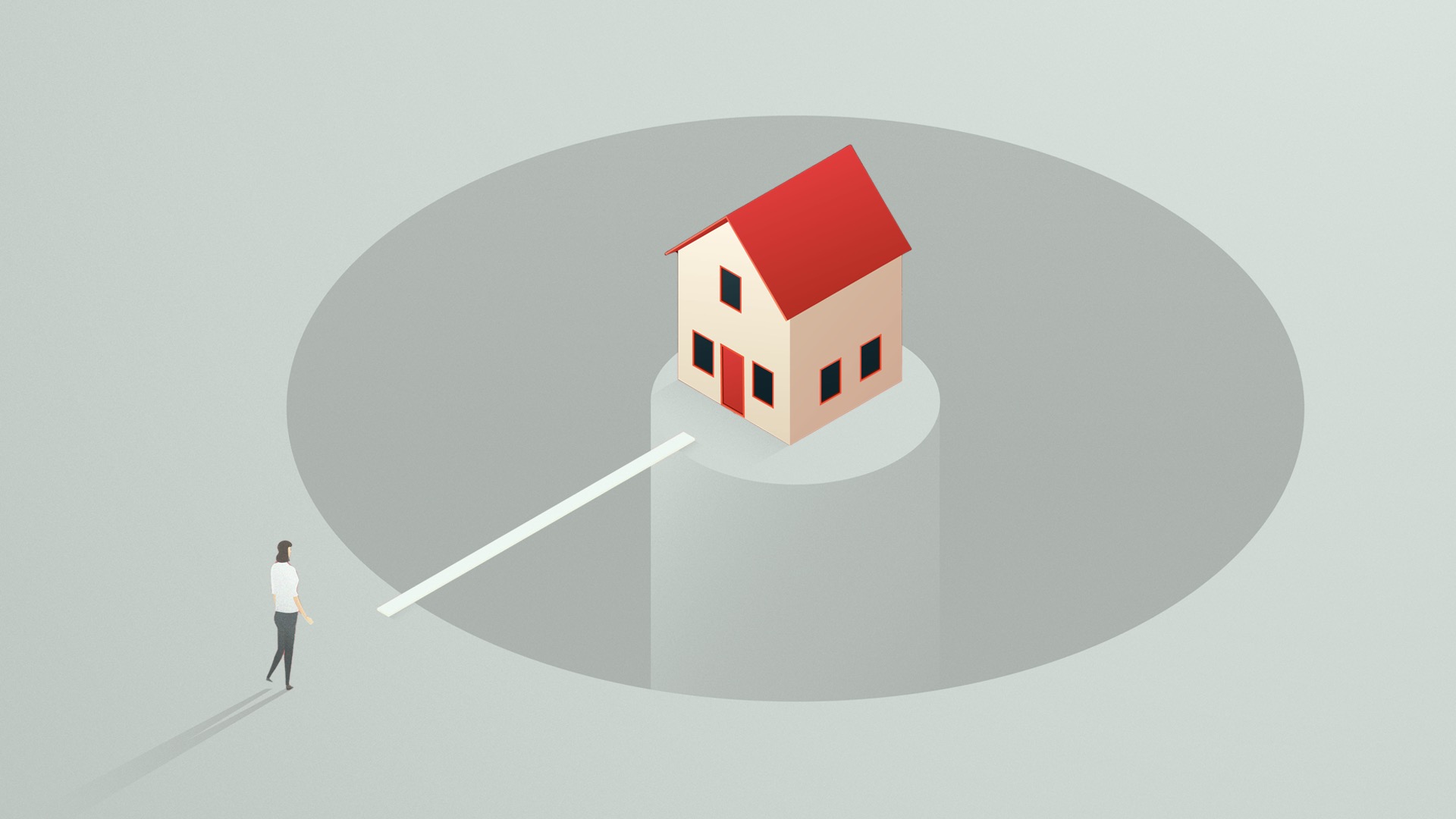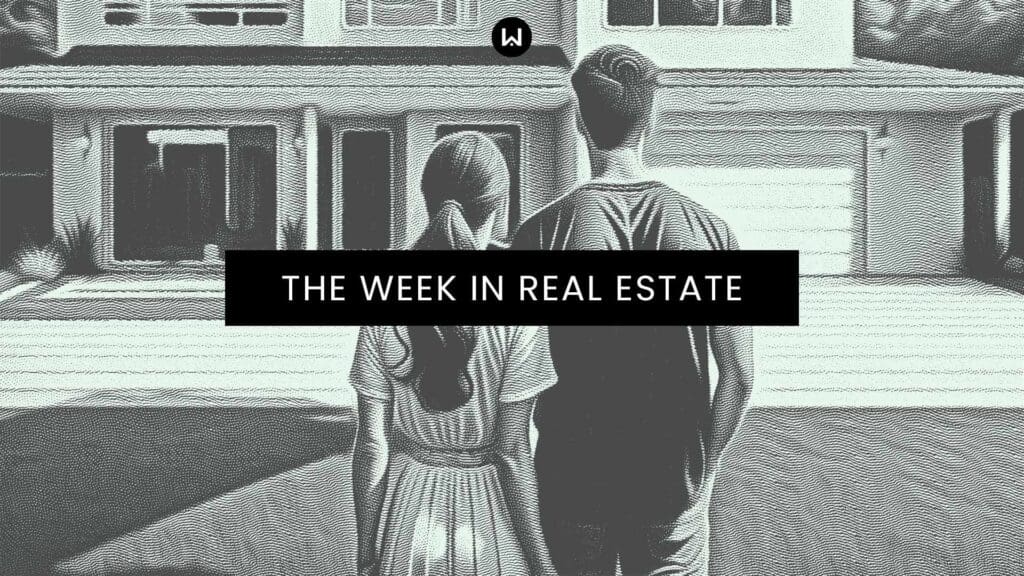The Pros and Cons of Bridge Financing
If you’re buying and selling a home at the same time, here’s everything you need to know about bridge loans.
By Emily Southey | 8 minute read

Bridge financing is a short-term loan that can be used to purchase a new home before your existing home is sold. Many mortgage lenders offer bridge loans in Canada as a means of helping borrowers fund their down payments on new homes. So if you are planning on selling your current home and buying a new one, a bridge loan may be necessary to keep you afloat until your sale is confirmed and you receive the money. Please note that bridge financing is dependent on your current home’s equity. Therefore, these types of loans can only be used when a borrower has enough home equity built up to repay it in a short period. As mentioned, bridge loans are short term and typically do not need to be paid off before the borrower’s current home is sold (this can be as short as six months or up to 36 months). Bridge loans ultimately give buyers an opportunity to purchase a new home without worrying about selling their existing home fast. This may translate to a better offer for the seller.
Please note that bridge financing and home equity lines of credit (HELOCs) are not the same. While the former requires borrowers to pay back their loan when their existing property sells, the latter requires borrowers to make monthly interest payments. Although HELOCs are generally a less costly alternative, they may not be the best decision for buyers who are strapped for cash.
How Bridge Loans Work
Bridge loans work as follows: Borrowers apply for a bridge loan through a mortgage lender (often the same lender that is underwriting the mortgage on their new home). The amount of the bridge loan that the lender approves will not exceed the equity value of the borrower’s current home.
Before approving a bridge loan, the mortgage lender will ask the borrower’s real estate attorney to sign an Assignment of Proceeds Sale, which is a document outlining the terms of the bridge loan (for example, that the bridge loan will be repaid in full once the sale of the borrower’s current home is complete). On the day the home is sold, when the seller and buyer’s respective real estate attorneys settle the accounts, they will pay off the bridge loan by depositing the funds back to the lender (along with any additional fees or interest).
Qualifying for a Bridge Loan
Bridge loan qualifications vary between mortgage lenders. For example, some might stipulate that the borrower has a firm closing date from a buyer in order to obtain financing. In such an instance, the borrower would need to have the buyer sign a contract confirming this. On the other hand, some mortgage lenders — especially private lenders — may offer bridge loans without a sale agreement. That said, bridge loans from private lenders tend to be significantly more expensive.
It’s also worth noting that some mortgage lenders simply do not offer bridge loans owing to the risk involved. If your lender is one of these, you may be forced to apply for a bridge loan through a private lender.
No matter how or from what lender you qualify for a bridge loan, borrowers should be prepared to provide an up-to-date copy of the mortgage statement on their current home, as this will show how much equity remains after the sale is complete. Assuming you have sufficient home equity and are approved for a bridge loan, your loan will be equal to the down payment on your new home less the deposit you paid at the time your offer was accepted.
“Bridge financing and home equity lines of credit (HELOCs) are not the same. While the former requires borrowers to pay back their loan when their existing property sells, the latter requires borrowers to make monthly interest payments.”
The Cost of a Bridge Loan
As you can imagine, bridge loans cost money to obtain. In Canada, there are typically two types of fees associated with bridge financing: interest and administrative costs.
- Interest: Interest on bridge loans make up the bulk of the cost. The rate of interest is typically higher than on mortgages and other lines of credit, such as HELOCs mentioned above. This is because a mortgage lender is taking on more risk when approving a bridge loan, as there is always a chance the sale of one’s home will fall through. As a result, financial institutions often charge between 2% and 4% over their prime rate. Private lenders tend to charge even more. The good news is that since bridge loans are short term, you won’t be paying interest on your loan for very long, which can help mitigate these costs.
- Administrative fees: Mortgage lenders typically charge a flat fee to cover the administrative costs associated with approving a bridge loan. This fee ranges but may be between $200 and $500. In certain circumstances, such as if your bridge loan is very large or is in place for a longer period of time, you may be required to register a lien on your home, which is likely to incur additional legal fees.
The Pros and Cons of Bridge Gap Loans
To help you determine whether applying for a bridge loan is right for you, we outline the pros and cons of bridge financing below.
Pro: High Liquidity
Bridge loans provide a high degree of liquidity to borrowers in need of just that. Owing to the time-sensitive nature of bridge loans, the application process is typically much faster than other types of loans.
Pro: Greater Flexibility
Bridge loans are designed to give homebuyers the means to make a down payment on a home, even if their current home has yet to be sold. This means that even buyers whose home equity is tied up in their current home can afford to place an offer on another property. This might prevent a borrower from losing out on a home they love while simultaneously allowing them to hold out for a better, more lucrative offer on their current home.
Pro: Borrowers Can Remain in Their Homes
Another perk of bridge financing is that it allows borrowers to remain in their current homes without the pressure of financing a home purchase. This alleviates a lot of stress — if you cannot find the property you want, you can simply stay in your current home until you find one you like.
We put the real back in real estate.
Join Wahi today and find out how easy it is to get real estate in Canada.
Pro: Makes Your Offer More Attractive
It’s not uncommon for house offers to feature contingencies, however, some contingencies are less attractive than others. For example, while home inspection and financing contingencies are commonplace, house sale contingencies are less so and are certainly not very appealing to sellers. Without a bridge loan, you might feel obligated to include a home sale contingency with every offer you submit, which can seriously hurt your chances of your offer being accepted. But by obtaining a bridge loan, you will have the financial security you need to make an offer without such a contingency. This will make your offer much stronger, increasing the odds that it will be accepted.
Pro: Bridge Loans Are Available to Those With Poor Credit
One final pro of bridge loans is that even those with low credit scores can obtain them. Since bridge loans require you to use your home equity to back the loan, your risk level decreases, which means a lender might be willing to approve your loan, even if you have poor credit.
Con: High-Interest Rates
The first con of bridge loans is the high-interest rates. As mentioned above, bridge financing often comes with higher interest rates than typical mortgage loans. This is because they are short term and riskier in nature. The specific interest rate on your bridge loan depends on the financial institution, but you should expect to pay between 2% and 4% over the prime rate.
Con: Hefty Administrative Fees
Another con of bridge loans is that they typically come with hefty administrative fees. Even though bridge loans are much smaller and shorter than mortgage loans, lenders charge hefty administrative fees, including legal fees and closing costs.
Con: The Stress of Selling
One final drawback of bridge financing is that it can put unnecessary pressure on borrowers to sell their homes. If for some reason you are unable to sell your home, you may be stuck paying for two mortgages (the mortgage on your current home and your new home), alongside your bridge loan. This can cause significant financial stress. Even worse, failure to make all payments on time will make your loan compound and lead to extra fees. In turn, this puts a lot of pressure on borrowers to sell their homes quickly in order to pay off their loans. The result could be accepting a lowball offer and earning less money than your home is worth.
Frequently Asked Questions
Are there alternatives to bridge financing in Canada?
Yes, there are several alternatives to bridge financing in Canada. First, you could apply for a home equity line of credit (HELOC). If you have sufficient equity in your existing home, you can draw on a HELOC to finance the down payment of your new home. Please note that to go this route, you must plan ahead as a lender will not approve this type of line of credit if you’ve already signed a purchase agreement on your new home. Attempting to extend the closing date on your home purchase is another alternative to bridge financing. This one may not be as effective but is worth a shot. You can ask the sellers of the home if they will agree to change the closing date so that it better aligns with the sale of your existing home.
Will getting bridge financing hurt your credit score in Canada?
Bridge financing can lead to a temporary dip in your credit score. However, this decrease typically only occurs during the term of the loan, which may be as short as six months. Plus, once the loan is paid off, your credit score is likely to rise again.
Are there different bridge financing rates for different lenders in Canada?
Yes, lenders in Canada offer different bridge financing rates to borrowers. The specific rate you are approved for will depend on the lender you choose, the amount of the loan, your credit score, and whether a buyer has been confirmed for your home. To learn more about the terms and costs of bridge financing, we recommend reaching out to multiple financial institutions near you.
Emily Southey
Wahi Writer
Become a Real
Estate Know-It-All
Get the weekly email that will give you everything you need to be a real estate rockstar. Stay informed and get so in the know.
Yes, I want to get the latest real estate news, insights, home value
estimates emailed to my inbox. I can unsubscribe at any time.





